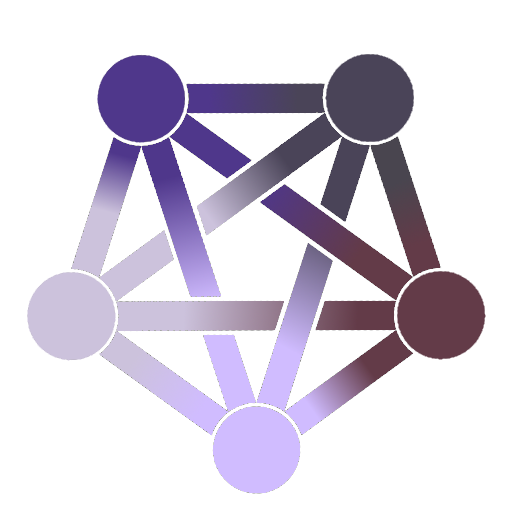
I do find cooking easier in grams. Just put the bowl on the scale and add ingredients until it hits the number. No measuring cups to wash. But it would life changing if woodworking switched to metric. Doing any sort of exact math is annoying as hell. What is 12’7” divided by 4? How many 1/8” is 0.55 inches?? It is my own personal hell.

It’s also a lot easier to multiply and divide recipes if you switch it over to metric. This is particularly useful if you don’t have enough of one ingredient and need to reduce the others by that ratio.
Then there’s the ability to measure the ingredient directly out of the container, using any scoop you can find, rather than needing multiple sets of measuring spoons.

I do find cooking easier in grams. Just put the bowl on the scale and add ingredients until it hits the number. No measuring cups to wash.
Uh, you know metric has volume measurements as well, and Imperial has weight measurements? Measuring cup vs scales is not really a difference in metric and imperial.

Directions and nutrition information and other stuff like that tend to use mass for metric and volume for imperial. Yeah, you can convert stuff, but it’s annoying.

And Celsius? And 24 hour time?

We use 24 h format here where I live but we speak in 12 h format because it’s less awkward. Not all that shines is gold, I guess

Computer, wake me up at zero six hundred hours!

That’s absurd, we just say “wake me up at six hours” and it understands us.

And “wake me up at 18 oʼclock” for the pm variant.

And “wake me up at 18 oʼclock” for the pm variant.

I use 24h in speech, it trips up some people a little but they all understand and I’ve gotten a few to switch!
My native language is Dutch, but I to give an example I say “vijftien uur” for 15:00 / 3pm and “vijtien uur dertig” for 15:30 / 3:30pm. My closest English equivalents would be “fifteen oʼclocm” and “fifteen thirty”, really.
My point is, make the tiniest possible step, only replace the number of the hour with the 24h variant and drop the am/pm part.

Yes please

If we are doing this, shouldn’t we go straight to Kelvin? So we no longer have to deal with negative temperatures

So water freezes at 273 degrees and boils at 373? No thank you

Please, baking is such a pain in the ass because measurements are never consistent

And everything is measured by volume. Just tell me the amount of salt I need in grams and I don’t have to worry about if it’s kosher or not.

inconsistent flour hydration and packing density has entered the chat

The A* paper standard and the metric system. A Pythagorean can dream.

5ml vs 15ml.

- US: 77⁄256 cubic inches vs 0.50 US fl oz (~4.929ml vs ~14.787ml)
- Australia: 5ml vs 20ml
- Rest of World: 5ml vs 15ml

That’s not a spoon, this is a spoon!


Super selfish reason but as an architect in the US, I deal with nice round imperial numbers all day. Door frames, typically 2”. Standard commercial door, 3’x7’. All the codes are based around imperial too. ADA door width, 3’. Masonry Dimension, every 8 inches. At this point, it would be hard to remember that ADA turning radius is 1525 mm (not the easy 5’…. And yes, I know that’s changing to 67” soon). There are literally hundreds of dimensions I would have to relearn. I suppose it’s probably for the best to switch over and rip that bandaid off, but damn, it would be a headache and take me much longer to review drawings in metric (in the short term).

I assume you would also introduce a new standard with rounded numbers, metric doors are also 200x80 cm for example, and sizes of everything gets rounded in the rest of the world, too. Timber sizes differ a little between north america and the rest of the world, it is a different framework, you’d get used to it.

All I think about is how much current tooling in manufacturing is made to use those round imperial measurements, and how much it would cost to convert/change them over. That’s possibly the #1 reason why the US will never go metric.

A change like that shouldn’t be done over night, you’d need to go double standard for a while, say 10-20 years depending on the sector. That way you can construct ‘ansi’ buildings while new development is slowly moving to ‘iso’, and machines get the new specs when replaced. Give a heading and industries will slowly adapt.

True, would just have to get accepted by the ICC and all the state legislatures who approve state wide code. I have a feeling it will be difficult to convince some of the less forward thinking states to accept metric codes that take into account the rounding…. Who knows though. I don’t know a ton about that side of things

What does the first letter in “ICC” stand for, again? One would think it ought to already have metric.

Just make your drawing in an imperial template and change the unit display when your done.

I personally fucking hate ounces. Recipes could mean volume or weight.

Actually not accurate for “Rest of the World”, China uses year month day.

Which is the best date format for sorting stuff alphabetically.

Iso standard time

That’s also great, but unhandy for manual use. Imaging a folder full of files like:
2004-06-14T23:34:30+02:00_funnypic.png
04-06-13_funnypic.png is much better in that regard, but obviously is not that precise.

If you don’t butcher it like you did, ISO8601 caters for any amount of precision you need.
For the vast, vast majority of my usage 2023-07-23 is sufficient. If you need a time as well just append the time and the nice thing is it’ll still keep things in order (I’ve not found myself needing to use the timezone notation as well since I don’t usually share dates cross-border). For work I use the week notation a lot 2023-W30-4.
04-06-13 is not helpful because now I don’t know if you’re European and mean 4th of June 2013, or if you’re american and mean 6th of April 2013, or if you’re some weirdo who means 13th of June 2004.

These are the iso standard timestamps I regularly use in code, which are precise but unhandy. There is no butchering, it’s just one of the full standards.
As I said above it’s highly unhandy to use the full string. The shortened two digits version is fully sufficient when operating in a controlled environment, because you know what each pair represents. As soon as you go into the great unknown, you can’t say for sure what format is used anyway.
What we can definitely agree on, is that a standard process would help a lot, whichever it is. Preferably one that works well with alphabetically sorting.

That is a timestamp, not a date. 2013-06-13_funnypic.png is better.

Not funnypics but lets say your bills, stuff in your backup:
- dr.sowieso-2022-02-01.pdf
- dr.sowieso-2021-10-12.pdf
- …
Gets sorted by name automatically.

I also do because it is ISO standard. I also do 24 hours for time. I wish scheduling application would do that. I don’t know how many times I have scheduled a meeting for 8PM the following day instead of 8AM.

@SeaJ I agree on time, 24 hours makes it a lot easier to communicate times with people in other time zones and easier to calculate from GMT.

What china, isn’t year-month-day some iso norm?

Yeah, ISO 8601 or better yet: RFC 3339.
(You’re actually allowed to read the latter.)

Yeah, just saw that someone mentioned it already.

There is no spoon

c/factorio

Chinas largest to smallest unit makes sense to me since it’s the same as Arabic numbers, largest to smallest, and so sorting order would also be same.

How long is that thing?
A foot.
How long is that?
About as long as a foot.
Oh cool, I have two of those to compare right here. Thanks for telling me how long stuff is in an easy to understand way.
What about that thing?
30 centimeters.
How long is a centimeter?
A hundredth as long as a meter.
How long is a meter?
As long as the distance light can travel in a vacuum in 1/299752458 of a second.
Please throw yourself off a bridge for using bizarre measurements developed by frenchmen.

Actually that’s a modern measurement concept based on the original meter. By using this concept, the size of a meter is tied to absolute terms in physics that “anyone” could measure with the right tools, while the original concept was based on a physical object called the meter, which is subject to many things such as heat dilation for example making it not accurate, and if the original object was lost we would not have a way to tell what is a meter (conceptually speaking of course).
The foot on the other hand (lol) is traditionally based on the king’s foot size. This of course depends on which country (or realm?), and to make matters worst, who’s the king at the time, because yes the official measure would change based on that too.
Of course that’s not how it is today, but we can say the original foot was lost long ago.

Ditto for the original meter. We sure are lucky that an approximation of the measurement is built into the name of the foot. It’s frighteningly European to have a measurement name that roughly translates to “measure”
Hey, how many measures is that?

honestly curious, as someone that doesn’t intuitively know how long a foot (in terms of measure) is, does it actually compare to the average size of the average foot? Like if you say something is 2 feet long, can you actually walk 2 steps and that’s a pretty good approximation?

Its a tad low if you’re barefoot, frighteningly close when you have shoes on. For men’s average shoe sizes.
It’s a man’s man’s man’s foots world.

The imperial system (of length at least) has a very human basis. An inch is the first joint of your thumb, the foot is your foot, the yard is one step, a stride is two (step left, step right), a mile is 1000 strides. Normal walking speed is about 100 steps a minute, so a mile is about 20 mins of walking
The problem is when they generalized these distances, they apparently used the biggest guy they could find… It still makes sense for rough measurements, but I already use metric for anything small or precise. Or fast - I don’t even know what gravity is in imperial units. Kmph isn’t natural for me, but I think I could get there…I like 60mph being a mile a minute, it helps me estimate, but i could get over it
Weight and volume? I already use metric for everything but my own weight, because screw that nonsense.
Temperature? I’d like something more human scaled for daily use, I’ve tried getting used to it but metric just doesn’t click the same way. I like how Fahrenheit is roughly the livable range - below 0 is intense even with proper attire, and above 100 is dangerous even if you’re adapted to it. It’s not perfect, but maybe something like Celsius*2 for easy translation?
Anything not coming into contact with you, like cooking or cpu temp, would be better in Celsius though - things change around 100C
At the end of the day, I think it just makes sense to have more than one unit of measurement for certain things - one for human scale that is easy to grasp based on our bodies, and one for measurement.
It would be nice to say “I need like 10 feet of hose” and they give you 3.5 meters because it’s understood it’s an estimate, or you say “I need these boards cut to 2.75m” and they know it’s a measurement and give it to you exactly that.
And I would not miss it if volume and weights were metric only - i can’t tell you how many times I’ve converted teaspoons to ml or ounces to grams, maybe it’s because I learned chemistry before cooking but holy crap is that so much more helpful
